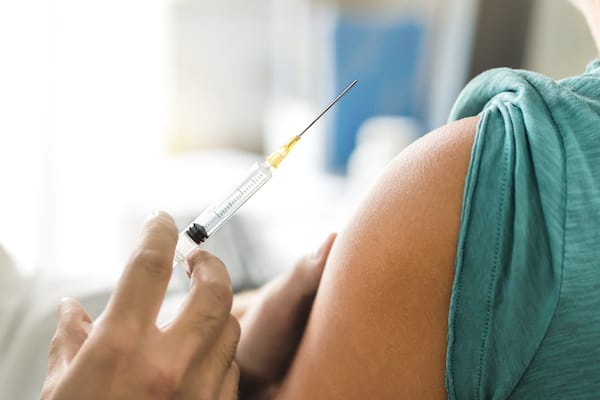By John D. Loike
Never in our recent history has there been a need to vaccinate the whole world as quickly as possible. Given the infectivity of SARS-CoV2, our incomplete understanding of the transmission of infectious SARS-CoV2 viral particles by asymptomatic COVID patients and the severe medical consequences and lethality of COVID-19 infection, the rapid global distribution of any safe and effective vaccine must have the highest priority.
This process began when Pfizer, Moderna, and Astrazenica, announced positive results with their vaccines. As we approach 2021 more companies, such as Johnson and Johnson, and Inovia will present their clinical results for their vaccines. The obvious question is how effective will each vaccine be, and what will be the recommendations regarding vaccine distribution to rapidly immunize all Americans.
None of the companies involved in vaccine development have the capacity to rapidly produce billions of doses, quickly. If the vaccine platforms of Pfizer, Moderna, and Astrazenica are a model of COVID-19 vaccinations, then two doses will be needed to globally vaccinate our population. This translates to producing about 14 billion doses. While governments around the world need to address how each company will distribute their vaccine or who is vaccinated first, we should not lose sight that all these companies can coordinate together to produce their vaccines. In addition, simple steps can be taken by our government. Since Pfizer’s vaccine requires special refrigeration, it would make sense to have it given to health care workers at their various hospitals that already have such refrigeration units. Moderna’s and Astrazenica’s vaccine does not require deep freezing units and maybe should be available to key states where the infectious rate is high. At this point there is no need to have each state access to all of the vaccine since they all appear to be safe and effective. Normally, autonomy is a good bioethical guideline. However, in this case we should let the state governments and their health care professionals decide what vaccines should be given to the populace. In the future, as we learn about the advantages and disadvantages of each vaccine platforms, autonomy can return to allow patients to choose which vaccine they prefer. Maybe, the CDC should take a leadership position on this task to assist and coordinate with state legislators the best way to rapidly distribute all the vaccine platforms.
At the beginning of the pandemic, the U.S. responded by having many non-ventilator companies shift their manufacturing plants to produce essential ventilators. the vaccine developers should use this model and allow any competent company to help produce and distribute their vaccines. Perhaps, patents and intellectual property rights of COVID vaccines should be suspended until the pandemic is over. Jonas Salk famously did not retain the rights to his polio vaccine, asking “Could you patent the sun?”
Another key factor is the need to promote vaccine research. We failed to complete vaccine development for SARS, MERS and Zika because the pandemic waned before the vaccines were ready for FDA approval. This pandemic sends a profound message that governments and scientists need to dramatically improve pandemic preparedness to prevent and respond to future viral pandemics. It is wrong to forget the tragedies of this pandemic after it passes.
These types of viral infections are not going to stop. We must not believe that SARS-CoV2 is atypical of future viral infections. Government agencies need to allocate more funding for future viral detection, medications, and vaccinations. The economic challenge from global lockdowns has never been as apparent as with COVID. There is no doubt that the billions of dollars that the US government has invested in vaccine development is partially responsible for the tremendous progress we have made to hopefully stop this pandemic. Classically, we have used either dead or attenuated virus to design vaccines. Now we are developing innovative vaccines, such as DNA vaccines, RNA vaccines, viral vector vaccines and protein subunit vaccines. The government must continue to fund grants to study all aspects of global viral pandemics. With the right focus on vaccine research and development we have a unique opportunity to save billions of lives now and in the future.
John Loike is a bioethicist and biology professor at the Touro College and University System
The Editorial Team at Healthcare Business Today is made up of skilled healthcare writers and experts, led by our managing editor, Daniel Casciato, who has over 25 years of experience in healthcare writing. Since 1998, we have produced compelling and informative content for numerous publications, establishing ourselves as a trusted resource for health and wellness information. We offer readers access to fresh health, medicine, science, and technology developments and the latest in patient news, emphasizing how these developments affect our lives.








